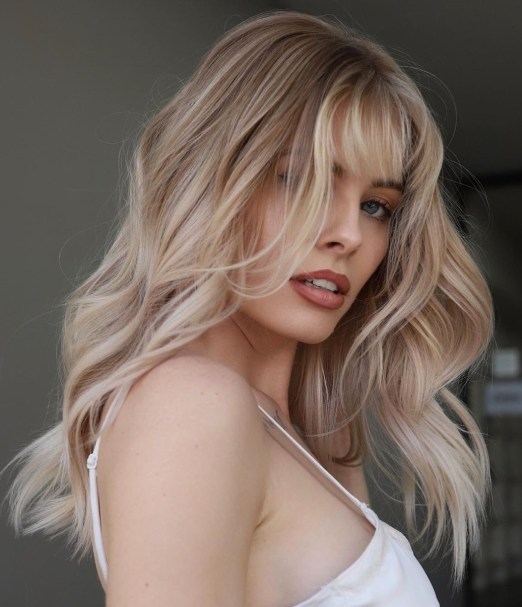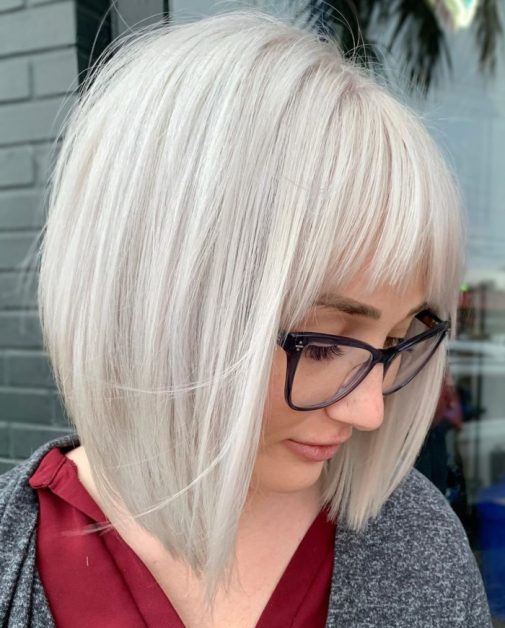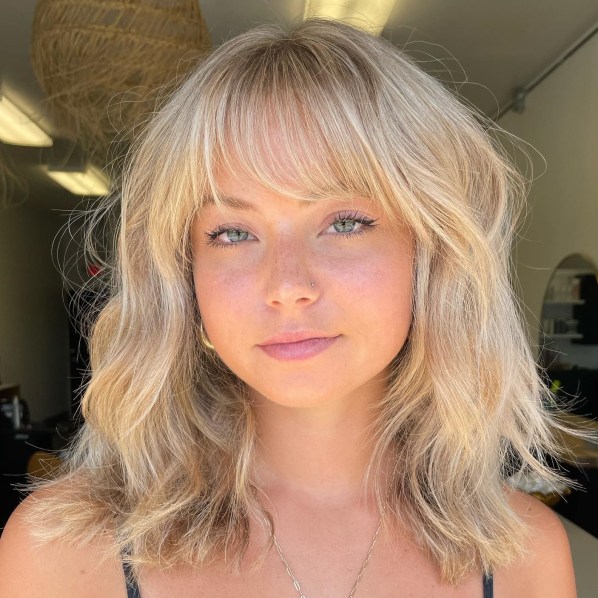By this point, it's evident that bangs are experiencing a surge in popularity. The latest trend? Curve bangs. But what exactly are curve bangs, and how do they differentiate themselves from other styles? Allow us to explain: Curve bangs are characterized by their curved shape, which enables them to beautifully frame the face.
If you're still wondering how they set themselves apart from similar cuts like curtain and blunt bangs, you're not alone. That's why we've consulted two experts to provide a breakdown of curve bangs. Here's what you should know.
What Defines Curve Bangs?

Essentially, curve bangs are bangs that possess a curved shape to complement your face. According to Andrew Fitzsimons, a celebrity hairstylist and the founder of Andrew Fitzsimons Haircare, “These bangs are designed to mimic the natural contours of your face, with longer layers on each side and a shorter length in the center.”
To compare them with other styles, David Cotteblanche, a senior hairstylist at Fekkai Soho, explains, “Curve bangs combine elements of both curtain and blunt bangs. They are shorter at the front, starting in the middle of the eyebrows, and then curve outwards, resulting in a bolder and more defined appearance compared to curtain bangs.”
While curve bangs can suit any hair type, both stylists particularly recommend them for individuals with naturally straight hair. Fitzsimons explains, “Long, straight hair can appear weighed down, and curve bangs have the ability to add shape to the hair and enhance facial features.”
Styling Tips for Curve Bangs

The good news is that styling curve bangs is simple and offers room for creativity and personalization. “You can create a variety of looks with these bangs—thick, wispy, voluminous, or straight,” says Fitzsimons.
For a straightforward style, begin by applying a leave-in conditioner that provides heat protection to nourish your hair. Then, use a 1.5-inch curling iron to gently curl the bangs towards your face. Alternatively, you can use hot rollers and leave them in for approximately five minutes.
To finish the look, apply a small amount of glossing cream, such as Fekkai Brilliant Gloss Multi-Tasker, to add shine and ensure your style remains intact throughout the day, advises Cotteblanche.
Communication with Your Stylist

Fitzsimons suggests bringing visual references when discussing curve bang with your stylist. This ensures that you achieve the desired outcome—a style that complements your hair. He mentions Kim Kardashian as a source of inspiration, noting how she flawlessly sported curve bang with her half-up hairstyle, which beautifully accentuated her face.
Another prominent example of this bang style is Taylor Swift, as credited by Cotteblanche. He also points out Sarah Hyland, whose edgier look benefits from the face-framing effect of curve bang.
If you'd like to provide more specific direction to your stylist, simply express that you prefer a more defined haircut than curtain bangs. If you've been contemplating bangs, why not give curve bangs a try? Chances are you won't regret it.
